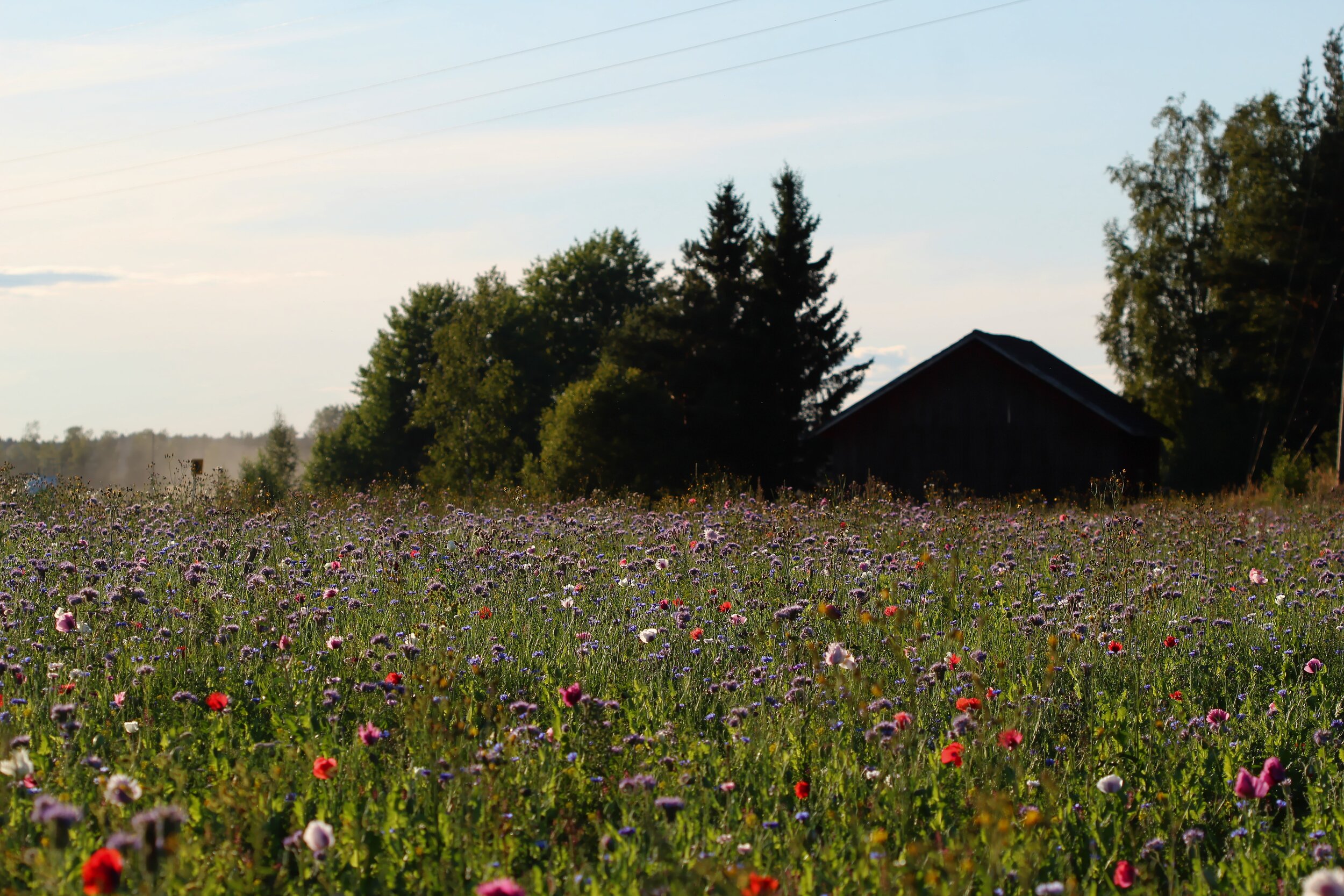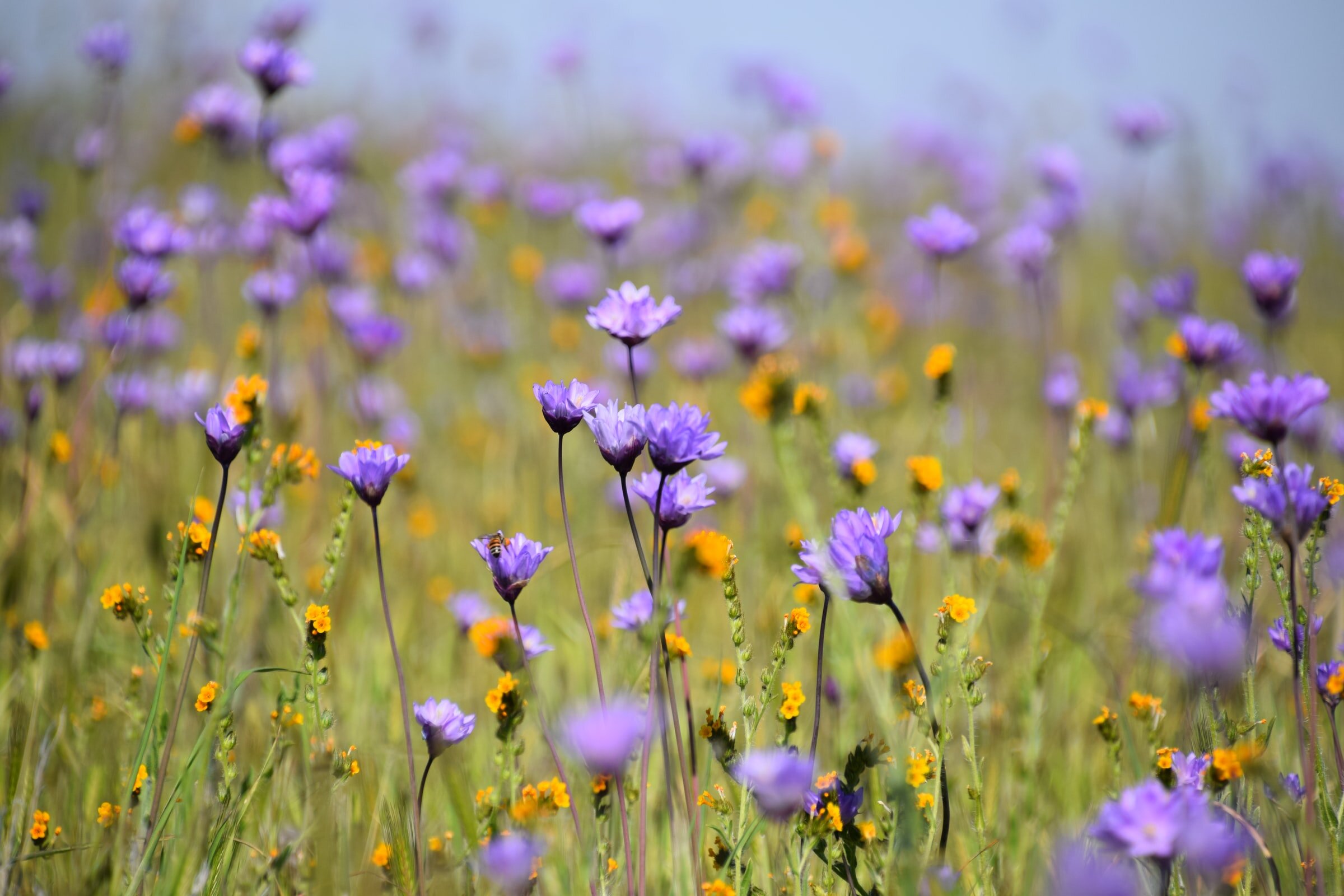
Photo by Sonia Cervantes

Photo by Anne Nygård
From Lawn to Meadow
Imagine not having to mow your lawn every week. Think how lovely it would be to look out your window onto a field of wildflowers. Do you know how much money you could save by not having to water your lawn regularly, fertilize it and use weed killer. These are just a few of the many benefits of replacing your lawn with a beautiful meadow.
Benefits of a meadow vs a lawn
1. Meadows are more environmentally friendly. The pesticides and chemical fertilizers that make that perfect lawn are harmful to the environment. They seep into the ground and can find their way to the local water supply. In addition, the gasoline and oil used in power equipment like lawn mowers, tractors and trimmers contribute to air pollution. According to "Green America", "homeowners use ten times more chemicals per acre than farmers". They continue to explain how unfriendly treated lawns can be to the environment by saying, "(such lawns) emit four times more greenhouse gases than they absorb".
2. Meadows are friendly for wildlife. While a traditional lawn may look nice, the chemicals necessary to keep it looking pristine can be harmful to insects, birds and wildlife. What's more, there's little food or shelter for those bugs, birds and animals on a traditional lawn. Meadows support a diverse array of pollinators and birds.
3. Meadows require little maintenance. Meadows sown with native grasses and wildflowers grow well without the irrigation, pesticides and fertilizers necessary to keep a traditional lawn green and lush. In addition, a meadow doesn't need to be mowed, which will save you additional time as well as money on equipment. All you have to do to keep your meadow healthy and vigorous is to cut it back once a year in the fall. Nature does the rest.
4. Meadows are versatile. Meadows can be designed for any space that gets at least a half-day of sunshine each day. The best results come from planting a variety of grasses and wildflowers that are indigenous to your regions. Meadows can be adapted to large or small space, to urban or rural settings. Meadows grow in poor soil as well as good, loose, well-aerated soil.
So, why try to wage that unwinnable battle for the most perfect lawn? Instead, opt for a delightful meadowscape and let nature do what it does best--nurture plants, animals and birds and return better and stronger every season.
As you see, meadows can be a terrific alternative to the traditional lawn.

